Premium Only Content
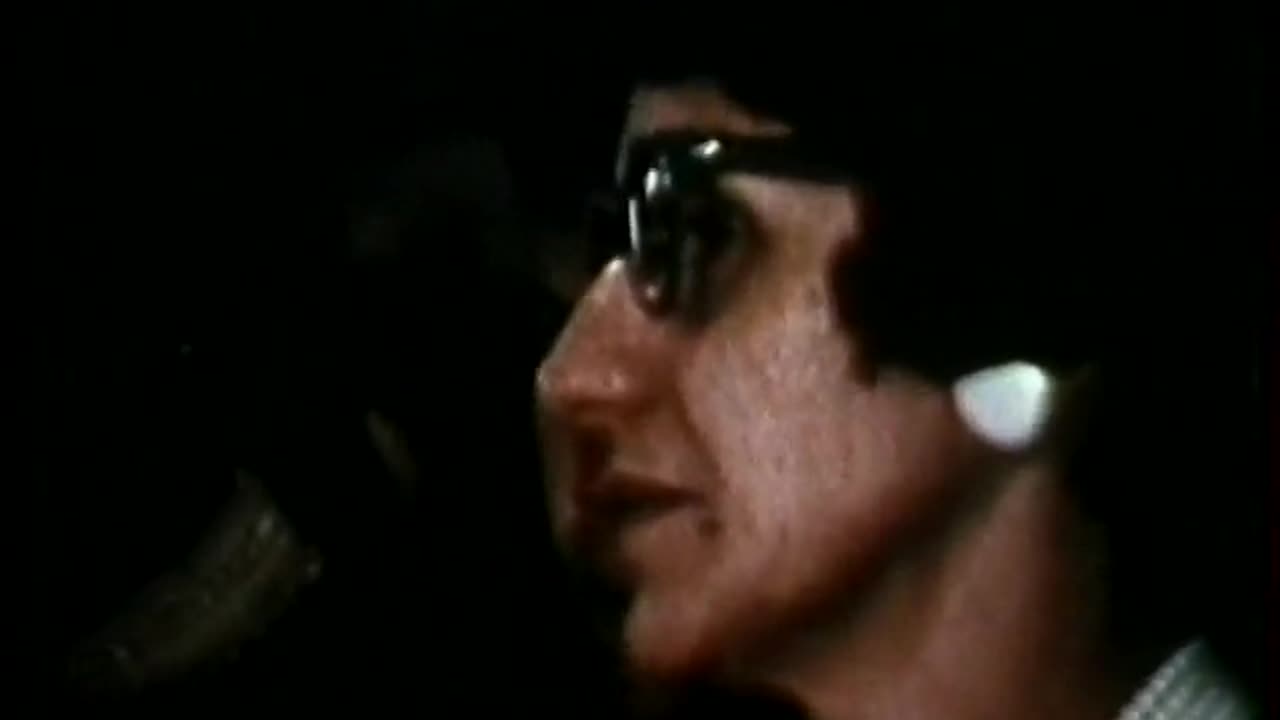
Exposing the CIA: Operations, Torture, and Overthrowing Government (Part 2)
More CIA stories: https://thememoryhole.substack.com/
"ON COMPANY BUSINESS (PART II)" delves deeper into the CIA's actions within specific countries, shedding light on the turmoil and devastating human toll incurred. This installment provides a comprehensive examination of the agency's involvement in torture, spotlighting CIA-operated schools where torture techniques are taught. It explores seminars conducted by CIA personnel in foreign nations, employing both human subjects and equipment sent from the US for these brutal practices.
The documentary uncovers the intricate web linking the CIA, multinational corporations, and various US government agencies in orchestrating the overthrow of governments in Chile, Brazil, and Ecuador. Released in December 1983, this part of the series exposes the harrowing consequences of CIA interventions and the interconnectedness of powerful entities in geopolitical affairs.
The 1964 Brazilian coup d'état (Portuguese: Golpe de estado no Brasil em 1964) was the overthrow of the Brazilian president João Goulart by a military coup from March 31 to April 1, 1964, ending the Fourth Brazilian Republic (1946–1964) and initiating the Brazilian military dictatorship (1964–1985). The coup took the form of a military rebellion, the declaration of vacancy in the presidency by the National Congress on April 2, the formation of a military junta (the Supreme Command of the Revolution) and the exile of the president on April 4. In his place, Ranieri Mazzilli, the president of the Chamber of Deputies, took over until the election by Congress of general Humberto de Alencar Castelo Branco, one of the main leaders of the coup.
Democratically elected vice president in 1960, Jango, as Goulart was known, assumed power after the resignation of president Jânio Quadros, in 1961, and the Legality Campaign, which defeated an attempted military coup to prevent his inauguration. During his government, the economic crisis and social conflicts deepened. Social movements in various milieus — political, trade union, peasant, student, and military (low military ranks) — advocated for base reforms, also proposed by the president. He had growing opposition among the elite, the urban middle class, a large portion of the officialdom, the Catholic Church and the press, being accused of threatening the legal order and of colluding with communism, social chaos and the breakdown of the military hierarchy. Throughout his tenure, Goulart had come under numerous efforts to pressure and destabilize his government and plots to overthrow him. Brazil's relations with the United States deteriorated and the American government allied with opposition forces and their efforts, supporting the coup. Goulart lost the support of the center, failed to approve the base reforms in Congress and in the final stage of his government relied on pressure from the reformist movements to overcome the resistance of the Legislature, leading to the height of the political crisis in March 1964.
On March 31, a rebellion broke out in Minas Gerais, jointly led by the military and some governors. Military loyalists and rebels moved to combat, but Goulart did not want a civil war. The loyalists initially had the upper hand, but with the occurrence of mass desertions, the president's military situation deteriorated and he successively traveled from Rio de Janeiro to Brasília, Porto Alegre, the interior of Rio Grande do Sul and Uruguay. The coup plotters controlled most of the country by the end of April 1, and Rio Grande do Sul on the 2nd. Congress declared his position vacant while he was still in Brazil's territory, at dawn on the 2nd. Movements to defend his mandate, such as the call for a general strike, were insufficient. While a part of society welcomed the self-styled "revolution", another was the target of strong repression. The political class expected a brief return to a civilian government, but in the following years the authoritarian, nationalist and politically aligned dictatorship with the United States was consolidated.
Historians, political scientists and sociologists have given numerous interpretations to the event, which was both the implantation of the military dictatorship and the last of several political crises of the Fourth Brazilian Republic with similar opponents, as in 1954, 1955 and 1961. In the international context, it was part of the Cold War in Latin America and occurred at the same time as several other military coups in the region.
Terminology
In 1970, the press records the anniversary of the "revolution"[b]
After taking office, Castelo Branco defined the process that brought him to power: "It is not a coup d'état, but a revolution".[1] The term "revolution" also appears in the first Institutional Act (AI-1). This concept of revolution is more inspired by pronunciamentos, with the overthrow of a government and the claim to reaffirm popular sovereignty, than by a radical break with the established order, as in the Russian Revolution of 1917.[2] It remained in use at the barracks during and after the dictatorship.[3][4] However, for Ernesto Geisel, what happened was not a revolution, because a revolution is in favor of an ideal and the 1964 movement was just "against Goulart, against corruption and against subversion".[5] Gilberto Freyre praised what happened as "a 'white revolution', promoting political and social order".[6]
Current historiography uses the term "coup" for the process.[7] There was a capture of state bodies by military force, and the new owners of power were above the previous legal order. This can be seen in the preamble of AI-1 — "the constitutional processes did not work to remove the government", and the "victorious revolution edits legal norms without being limited in this by the normativity prior to its victory".[8] The seizure of power also occurs in a revolution, but in its modern sense this is followed by "profound changes in the political, social and economic system". What happened in Brazil was defined as the defense of the established order against disorder.[9] Counterrevolution is used by some militaries and academics, with both positive and negative connotations.[c] There is also the term "countercoup". The rejection of the term "coup", in a favorable way to the event, existing in the current political discourse, is evaluated as revisionism or negationism.[10]
The classification of the coup as "civil-military" is widespread and is not recent. One of the first authors to use it was René Armand Dreifuss, in 1981; however, the term was used in the sense of "business-military", referring to specific civilians, and not generically to civilians as well as non-military.[11] Since at least 1976, several authors have called the event a "movement" or "coup", "political-military", "business-military" or "civil-military". "Civil-military" is used because civilians not only supported, but also carried out the coup.[12] The relative importance of the military was greater in the final stages and in the realization of the coup. It could only begin with the deployment of troops. Firepower, available armaments, vehicles employed, and troop size were important and purely military considerations, although there was no combat.[13][14]
Background
Political
Election campaign of Jânio Quadros in 1960
The democratic period that began in 1946 after the ousting of Getúlio Vargas was marked by opposition between national-statists and liberal-conservatives, divided by their attitude towards foreign investment, alignment with the United States and state intervention in the economy and labor relations. In three moments — 1954, in the suicide of Getúlio Vargas, 1955, in the counter-coup of Marshal Lott, and 1961, in the resignation of Jânio Quadros — some military personnel and politicians from the liberal-conservative bloc attempted coups, creating serious crises that neared civil war, but they did not have enough support in society and in the Armed Forces. In 1964, the conflict was between the same blocs, but the coup found sufficient basis to succeed.[15] Given previous coup attempts, what happened in 1964 was not solely a result of the immediate situation.[16]
The three major parties were the Brazilian Labor Party (PTB), the National Democratic Union (UDN) and the Social Democratic Party (PSD). PTB represented Vargas' labor legacy, PSD was born out of the Vargas political machine, and the UDN came from the opposition to Vargas. The country's ever increasing urbanization trend gradually expanded PTB's votes. PTB and PSD were allies for most of the period.[17] The UDN represented the right, the PTB leaned to the left and the PSD was in the center.[18]
The 1960 election installed Jânio Quadros as president, supported by the UDN but positioning himself above the parties, and, as vice-president, João Goulart, from the PTB. Jânio and Jango were on opposing tickets, as in the electoral system at the time the election for president and vice-president was separate. Once in power, Jânio isolated himself and, after a short time in office, he resigned in August 1961, probably in a maneuver to have his resignation refused and to return strengthened to office. He counted on the strong rejection to his vice-president, who was on a trip to China, among the military.[19] Jânio was popular among the military, and Jango, an old foe. In 1954, when he was Vargas' Minister of Labor, he was already considered very leftist and was dismissed from office due to the Manifesto dos Coronéis.[20]
Jânio's maneuver failed and his resignation was accepted. But the rejection to Goulart materialized in the veto of the three military ministers, among them Odílio Denys, the Minister of War, to the return to the country and inauguration of Goulart. Leonel Brizola, governor of Rio Grande do Sul, rejected the veto, triggering the Legality Campaign. He received widespread support across the country, and general José Machado Lopes, commander of the Third Army, joined the cause of constitutional succession. Both leftists and conservatives formed the coalition opposing the military ministers. Conservatives devised a solution to the crisis: Jango would take office, but under a new Parliamentary Republic, in which his powers were reduced.[15]
The next presidential election was scheduled for 1965. The strongest pre-candidates were Juscelino Kubitschek, for the PSD, and Carlos Lacerda, governor of Guanabara and staunch opposition, for the UDN. PTB's best options would be Brizola or Goulart himself, but the law did not allow re-election or the candidacy of relatives (Brizola was Jango's brother-in-law).[21]
Socioeconomic
See also: Economic history of Brazil
Assembly during a strike in São Paulo in 1962
Both Jânio and Jango inherited from Juscelino Kubitschek (JK) an economy in great modernization, but unbalanced, and were unable to overcome the Brazilian economic difficulties of the early 1960s, especially the growth of inflation and the deficit in the balance of payments.[22] Inflation rose from 30.5% in 1960 to 79.9% in 1963 and 92.1% in 1964. Brazil's GDP grew by 8.6% in 1961 and only 0.6% in 1963.[23] Both the middle class and workers were concerned about their wages being eroded.[24] The failure to overcome the economic crisis was due in part to pressure from domestic (workers and business) and external interest groups.[22] The increase in the cost of living boosted the organization and activity of trade unionism. There were 430 strikes in the period from 1961 to 1963, against only 180 from 1958 to 1960. The General Workers' Command (CGT), which emerged outside union legislation, organized the "first strikes of an explicitly political nature in Brazilian history".[25]
According to a report by the International Food Policy Research Institute there were food shortages, pushing inflation up and drawing attention to the countryside.[26] The country was more agrarian than at present: in the 1960 census, only 44.67% of the population lived in cities. In Brazil's Southeast, this figure reached 57%, and in the Northeast, only 33.89%.[27] There was great land concentration. The technological level was outdated.[28] Social mobilization also reached the countryside, where land invasions and violent conflicts took place.[25] The Peasant Leagues, concentrated in the Northeast, reached their peak and became radicalized, calling for "agrarian reform by law or by force" in place of the moderate path proposed by the Brazilian Communist Party (PCB).[29][30][d] They went into decline after 1963 due to the regularization of rural unionization by the government and the organization of unions by the Catholic Church and the PCB.[31]
The period witnessed an intense "popular mobilization".[32] Unionists and members of the Leagues joined other members of the left. They were heterogeneous, but they had in common the demand for base reforms — "banking, fiscal, administrative, urban, agrarian and university" — "in addition to extending the right to vote to illiterates and non-graduated officers of the Armed Forces", the legalization of the PCB, the Independent Foreign Policy, the "control of foreign capital and the state monopoly of strategic sectors of the economy".[33] The left was suspicious of Goulart, and both sought to ally themselves for reforms, but still seeing themselves as autonomous.[34] The president came under heavy criticism from the left, who rejected his conciliation efforts.[18]
In the Armed Forces, movements of military subordinates such as sergeants and sailors clashed with officers over internal demands, such as the right to run in elections and marriage, and also advocated for reforms.[35] There were organized intellectuals, and some Catholics formed the Popular Action. Students militated in the National Union of Students (UNE). The PCB was well organized and successful in the unions in cooperation with the PTB. Leonel Brizola stood out within the political class, attracted fame with the expropriation of American companies and had many followers.[33] He unified groups in favour of the base reforms into the Popular Mobilization Front and mobilized his political base into the Grupos dos Onze.[36]
In the opposition, the rise of the Brazilian Institute of Democratic Action (IBAD), linked to the Central Intelligence Agency (CIA), and the Institute of Research and Social Studies (IPES), which brought together the "cream of Brazilian business community" was important. More than carrying out ideological propaganda, these organizations were a conspiracy center.[37]
International
See also: Brazil–United States relations during the João Goulart government § Context
John F. Kennedy, president of the USA, and João Goulart speaking to the press
Latin America was in the United States' sphere of influence,[38] but in the 1950s it was not considered very important.[39] In the context of the Cold War, the U.S. government was fighting the Soviet Union's expansion of influence through the policy of containment and was under domestic pressure to have a tough foreign policy.[38] In practice, in Latin America even reformist but non-Marxist rulers, such as Goulart, could be targets of American pressure,[40] which occurred through economic incentives or support for coups d'état.[38]
The Cuban Revolution, in 1959, brought Latin America to the center of attention and introduced the goal of avoiding its repetition in the rest of the region. With the Cuban Missile Crisis, in 1962, the balance of forces in the region leaned towards the U.S. to the detriment of the USSR, allowing a tougher attitude towards Latin American governments. The Alliance for Progress also emerged, a new economic assistance program that was supposed to prevent a new Cuba by supporting democracy, reforms (such as agrarian reforms) and overcoming underdevelopment.[41] U.S. policy towards the region did not materialize this idea.[42] Military coups, such as in Argentina and Peru, in 1962, and in Guatemala and Ecuador, in 1963, occurred as an international phenomenon, and the authoritarian governments installed were recognized by the U.S.[43] The goal of preventing new socialist and communist governments in the region was thus achieved.[44]
Latin American communists were influenced by developments in the socialist bloc, such as de-Stalinization, the Sino-Soviet split and the Cuban Revolution. Communist parties under Soviet influence, such as the PCB, went through a crisis due to the clash of their belief in a peaceful step with the Cuban example. Fidel Castro's government was allied with the Soviets at the international level, but supported the armed struggle.[45] The socialist bloc was also relevant as a hypothetical source of credit and economic support alternative to the United States, although it would not be able to replace the Americans in the event of a rupture.[41] The bloc had intelligence activities on the continent, including in Brazil, through the Czechoslovak StB,[46] but was taken by surprise by the coup.[47]
João Goulart's government
1961–1962
João Goulart in 1963
Jango took office in September 1961. In foreign policy, he continued the Independent Foreign Policy, expanding relations with the socialist bloc and opposing the sanctions proposed by the U.S. against Cuba.[18] This foreign policy did not accept the requirement of alignment with the U.S. or the Soviet Union. Even so, negotiations with the U.S. were important due to foreign debt and the regulation of foreign capital.[37]
Internally, the priority was, from the beginning, to recover the full presidential powers subtracted by the implantation of parliamentarism. To do so, Goulart would need to pressure Congress to overthrow the parliamentary Additional Act, possibly with a constituent assembly, or bring forward the plebiscite scheduled for 1965 in which the system of government would be submitted to popular consultation.[48] The anti-parliamentary coalition was broad, as even the president's enemies wanted a return to presidentialism. Through strong trade unionism, military and political pressure, in September 1962 Congress brought forward the popular consultation to January 1963.[49]
In October, elections were held for Congress and eleven state governments. Depending on the analysis, "the correlation of forces in Congress has changed little"[37] or "the result of the polls gave victory to the leftist, reformist and labor candidates"[50] The IBAD, supported by multinational companies, financed the campaigns of countless opposition candidates. The financing was controversial and investigated by a Parliamentary Inquiry Commission; the following year, the president closed the Institute.[37] In 1977, Lincoln Gordon admitted U.S. funding of the opposition in the election.[51]
1963–1964
Jango at the Central Rally
Presidentialism won by a large margin in 1963 and Goulart had a "new beginning", with full powers.[37] He intended to carry out the base reforms, but the agrarian reform was defeated in Congress and the possibility of voting on the other reforms was difficult. Friction between the Executive and Legislative branches increased as the right opposed the reforms and the left demanded their immediate implementation.[52] PSD support was lost throughout 1963.[17] The percentage of bills passed dropped to 7% in 1963 from 13 to 15% in 1959–1962.[53] However, throughout Goulart's term, he still managed to approve some important initiatives. Meanwhile, in the economy, the Triennial Plan, proposed to face the crisis, required a social pact with workers and businessmen to limit wages, credit, prices and government spending. After a few months, the plan was abandoned for lack of political support and the crisis continued.[18]
In September, sergeants from the Navy and Air Force were thwarted by the Supreme Federal Court (STF), which reaffirmed the ineligibility of their category to the Legislative. They launched an armed revolt in Brasília but were quickly defeated, with some fighting, by the army garrison. The sergeants' movement received sympathy from the left, but politically it was badly damaged.[35] The press became very critical of the president.[18] The following month, Carlos Lacerda gave an interview to the Los Angeles Times and discussed the possibility of a military coup against Goulart. The military ministers were outraged. Jango requested a state of emergency from Congress, but was heavily criticized by both the left and right and withdrew the request. His government was weakened.[37]
At the end of 1963, after the failure of the last attempts to reconstitute a base in the center, the president reconnected with the left. At the end of February 1964, he definitely opted for the clash, believing in the strength of the left. The Central Rally, on the 13th, and the presidential message to Congress, on the 15th, marked the end of the conciliation. The president had a schedule of rallies until May 1, which would coincide with a general strike, to put pressure on Congress to pass the reforms. The opposition reaction was also strong.[18] On the 15th, the governor of São Paulo, Ademar de Barros, demanded the impeachment and called the population to the streets;[54] on the 20th, the opposition organized the March of the Family with God for Liberty. In the Navy, the conflict between the authorities and subordinates culminated, on the 25th, in the revolt of sailors who refused the order to appear at the posts until their arrested leaders were released and their demands met. The left supported the sailors. The government granted amnesty to the rebels, drawing the indignation of officials in general and attacks in the press. The military crisis was deep, and officers refused to board ships. On the night of the 30th, the president did not back down and, aggravating the crisis, he attended the meeting at the Automóvel Clube with the same military subordinates.[18]
This would be the last act of that republican period.[55] On the 31st, general Olímpio Mourão Filho, head of the 4th Military Region/Infantry Division (4th RM/DI), began an offensive from Minas Gerais to Rio de Janeiro to overthrow the president. With the rapid progress of the revolt and Goulart's retreats, by April 4 he was in exile in Uruguay.[37]
The conspiracies
Marines confront angry sailors at the Rio de Janeiro Metalworkers Union
In addition to suffering a coup attempt in his own inauguration, Goulart was the target of preparations for another coup attempt from the beginning. By the end of 1961, there were already some conspiratorial groups,[56] albeit isolated in society.[18][57] The military conspiracy was decentralized and poorly organized until the eve of the coup.[58] Civilian efforts to weaken the government, on the other hand, were better articulated, and its prior destabilization was crucial to the success of the military intervention.[58] The military conspirators ran into the "inertial legalism" of most officers who did not want to risk their careers, and on the eve of the coup the majority of the military had not taken sides.[59]
In March 1964 the radical left denounced the coup's imminence,[60] but it came as a great surprise.[18] The president and his circle were aware of the conspiratorial activity, although they were unable to identify its foci.[61] The Federal Information and Counterinformation Service (SFICI) received messages from the conspirators, but little was done, as it was not directly subordinated to the president and Argemiro de Assis Brasil, head of the Military Cabinet from 1963 to 1964, had an overly confident attitude.[62] To avoid a coup, the government had a military apparatus as policy, that is, the occupation of key commands with loyal officers,[63] in addition to waiting for the support of lower ranks.[64]
Opposition funding of the 1962 elections would not make sense if the coup had already been decided, and there were efforts to move the president away from the left.[65] The conspiracy gained strength after the restoration of presidentialism in January 1963.[66][e] After the Sergeants Revolt and the request for a state of emergency in late 1963, many officers became suspicious of the president's intentions and joined the conspiracy with a “defensive” intent.[67] The passage of the PSD to the opposition, on March 10, 1964, was considered a signal by civilian and military conspirators. The radicalization throughout the month fueled the assumption that the president would carry out a self-coup. Parliamentarians came to agree with the conspirators.[18] In military memory, the events led to the accession of the undecided and formed the trigger for the coup.[68]
Factors, reasons and interpretations
Reaction to social movements
Rally in favor of the president in 1963
Authors such as sociologist Florestan Fernandes and historians Caio Navarro de Toledo, Lucilia de Almeida Neves Delgado and Jacob Gorender interpreted the coup as a way to defeat the "growing and autonomous organization of civil society", having a reactive and preventive character.[69] While several authors consider a victory for the left to be impossible, for Gorender there was a pre-revolutionary situation in early 1964, and the coup was a counter-revolution.[70] For Octavio Ianni the situation was pre-revolutionary, but without the possibility of a rupture with the institutions as in the Russian Revolution of 1917.[71] According to authors such as Ianni and Francisco Weffort, the populism that existed since the Vargas Era collapsed as workers began to act autonomously, while businessmen linked to international capital abandoned the populist system.[72]
The constant strikes "are interpreted as positive signs of the advance of workers' political awareness", but they also wore down the government, bothered the population during the suspension of services and alarmed businessmen.[73] The right affirmed the imminence of a "syndicalist republic".[74] Military testimonies emphasize the action of the unions, considering them as increasingly capable of putting pressure on the government and infiltrated by the communists. For Edmundo Campos Coelho, this reflected the fear of losing their own influence over the government, in addition to an organic conception of society, in which the gains of a specific group harm society in general.[75] Communists did have influence in important trade unions. Goulart, in turn, was tolerant with unionists, allowed the rise of PTB and PCB in the unions and used them as a political tool, but was harmed by them when their pressure made the Triennial Plan unfeasible. The president tried to regain control and weaken the same unionists he had previously supported, but without success, and at the end of his government he tried to rebuild union support.[76]
In the Armed Forces, the political mobilization of enlisted personnel was rejected by officers as an attack on military hierarchy and discipline,[77] even though officers were politically engaged.[78] In 1963, sub-lieutenant Gelcy Rodrigues Côrrea's speech — "we will take our work tools and make the reforms together with the people, and the reactionary gentlemen remember that the military's work tool is the rifle" — caused a serious crisis with the officers.[79] The left imagined that military subordinates could be a force in its defense, an idea considered, but which did not reach a concrete organization. For conservatives, the military was being subverted.[80] Furthermore, the president sought the support of military subordinates,[81] and his tolerant attitude towards the Sailors Revolt and speech at the Automóvel Clube gave the impression that he "spurred the crisis".[82] Attacks on hierarchy and discipline are listed as one of the main motivations for the coup by the military.[83]
Historiography agrees that there were disciplinary problems in the lower ranks of the Armed Forces in the 1960s, although specifically in the Army (and not in the Navy or Air Force) the evidence indicates that sergeants remained loyal.[84] Many authors and a large part of the left consider the Sailors Revolt, in particular, as the work of agents provocateurs of the Navy or the CIA. More recent ones challenge both these accusations and the conservative view that military underlings were being subverted; instead, they are considered autonomous agents.[f]
Stalemate in the base reforms
Base reforms on posters during the Sailors' Revolt
During the coup, Goulart told Tancredo Neves that the target was not him, but the reforms, and he could stay if he abandoned them.[85] Several authors agree that the objective was to prevent the reforms,[86][87] as they benefited and harmed certain sectors of society.[88] In addition to the reforms themselves, there was the association made with the radical left.[89] Although they were part of a national-developmentalist project of capitalist progress, they were even branded revolutionary.[90]
A contrary view does not consider the reforms as the central motive, as they were not entirely rejected and Goulart even had support among conservatives at the beginning of his term. Groups such as landowners strongly rejected the reforms, while some anti-communist sectors considered them an instrument to ward off communism, and this was precisely a precept of the Alliance for Progress.[91] Agrarian reform was not taboo, and even the IBAD held a symposium on it in 1961.[92] Some authors consider that there was room for negotiation throughout the mandate.[28] Opposition parliamentarians were not categorically opposed to the reforms.[89]
The failure of the proposals is attributed to Goulart's lack of negotiation skills (an existing and also contested assessment),[93] or, among authors with conjunctural explanations of the coup, to the "decision-making paralysis" of the political system, as described by Wanderley Guilherme dos Santos, and the radicalization and mutual disrespect for democracy, according to Jorge Ferreira and Argelina Figueiredo.[94] For Figueiredo, author of Democracia ou reformas? Alternativas democráticas à crise política: 1961-1964 (1993), possibilities to carry out reforms within the institutions were impeded by radicalism on both sides, and those defeated in the coup were thus partly responsible for its defeat. Argelina is criticized for taking "the focus of her explanation away from the civil and military right, IPES, the U.S. Embassy, etc."[95] and for her understanding of an undemocratic left.[96] For Moniz Bandeira, Jango fell precisely because he tried to conciliate.[97]
Anti-communism
Goulart and the communists
Posters at the Central Rally
Anti-communism is considered a fundamental element of the coup both in studies and among the military.[98] The period 1961-1964 was a high point of anti-communist sentiment in Brazil. It was associated with the Cold War, with Brazilian anti-communists mostly being favorable to the Americans and considering communism as the work of Soviet imperialism, but the sentiment had local roots since the 1930s, when the Communist Uprising took place.[99]
The problem would not be the person of Goulart, but the pressure he would receive from the communists.[100] Jango was responsible for transforming the PTB from a dyke against communism to an ally of the PCB, and the attempt to prevent his inauguration in 1961 already had anti-communist motivation.[101] Anti-communists did not believe Goulart was a Marxist, but feared that his alliance would pave the way for the Communists to advance.[102] In the testimonies in the Oral History of the Army, there is unanimity that the communists were infiltrated in the government, but not in Jango's association with communism.[103] Olímpio Mourão Filho thought that Goulart was not a communist, but he and Brizola would be killed by the communists and Luís Carlos Prestes would take power.[104] The distinction continues to be made in some military writings in the 21st century.[105] A similar opinion outside the military is that of Lincoln Gordon, for whom Goulart would stage a non-communist coup but then, due to his incompetence, fall victim to a communist coup.[106]
The PCB had influence in the unions, intelligentsia and government, but it was exaggerated by its enemies. Well-informed anti-communists were thinking of a presidential coup with communist support, but they were talking to the population of an imminent communist revolution. The communist label was also used for the entire radical left[107]—the military right had an elastic definition of who was a communist.[108] After the coup, there was surprise at the fragility of the communists.[107] Furthermore, the PCB believed in a phased revolution, the first being peaceful, bourgeois-democratic and in alliance with the "national bourgeoisie".[109][45] The immediate socialist revolution was desired by smaller groups.[g] The military, by the precepts of the Revolutionary War Doctrine, did not believe in the pacifism of the PCB, considering it a dissimulation with psychological purposes and the first stage in its seizure of power.[110]
Revolutionary War Doctrine
Seized "subversive material" in April 1964
The Revolutionary War Doctrine was taught to officers[111] and disseminated by civilians, such as the UDN deputy Bilac Pinto and the newspaper O Estado de São Paulo, by Júlio de Mesquita Filho.[112] It envisaged five stages of communist advancement. After the first, with psychological action, the second would be the formation of a network of local organizations and the infiltration of the state apparatus. The ongoing social unrest was seen as proof of this step. The first two, although without blood, were considered the most critical and difficult to fight. In the third stage, guerrilla warfare and terrorism would appear, in the fourth, free zones beyond the reach of the Army, and in the fifth, the violent seizure of power by a revolutionary army. According to Doctrine theorists, the intention of military subordinates to react with arms to a coup and the organization of Peasant Leagues and the Grupos dos Onze constituted the third stage of the revolutionary war in Brazil.[113]
In the countryside, the Peasant Leagues attracted fears.[114] The right saw revolutionary potential in the Brazilian countryman, which served to justify the coup as a defense of legality. Part of the left thought the same, and some members of the Leagues even formed a guerrilla movement, the Tiradentes Revolutionary Movement. The organization received support from Cuba.[115][116] When discovered and dismantled in 1962, it had disproportionate repercussions for its small size.[117] However, the strong reaction that the coup leaders expected in the Northeast did not materialize.[118] In Pernambuco, the outbreaks of peasant reaction that did appear were unarmed.[h]
The Grupos dos Onze were associated with communism and revolutionary warfare, generating fear among conservatives. They existed by the thousands and were formed as the future "embryo of a revolutionary party",[119] with the function of resisting a coup. According to Brizola, their function would be legalistic and they had no paramilitary character. According to one of his aides, there were plans to use them under the command of sergeants, participating in the occupation of barracks and arresting officers. However, they did not react during the coup, as they still had no concrete organization.[120] The press had published many actions attributed to them, but they were mostly imagined.[119]
Legality and democracy
In the speeches
Part of a series on the
History of Brazil
Terra Brasilis, Miller Atlas, 1519
Pre-Cabraline
Colonial Brazil
United Kingdom with Portugal
Independence
Empire of Brazil
Old Republic
Vargas Era
Populist Republic
Military dictatorship
New Republic
By federative unit
Topics
Research
flag Brazil portal
vte
Neither side of the political spectrum declared itself anti-democratic, but the conceptions of democracy were different: for the left, it was synonymous with reforms, and for the right, with legal formalism.[121] An anti-democratic character of the left is a controversial thesis.[96][122] Among the right, democracy could be associated with the restriction of freedoms to fight dangerous ideologies[123] or just mean free enterprise. The word was common in the name of anti-communist groups, where it could just be an empty label, although for many the authoritarian future that ensued was a disappointment.[124]
Coup-mongers took up the banner of legality, using defensive language as they conducted their offensive.[125][126] The defense of legality and the Constitution, not explicitly directed against the government, appeared in March 1964 in speeches at the PSD convention.[127] The Brazilian Bar Association accused the president of threatening the legal order.[128] Among military personnel, from 1963 onwards, documents appeared justifying the use of force in legal terms, such as the reserved circular released by Castelo Branco on March 20, 1964.[129] Castelo cultivated an image of a loyalist, which helped to obtain adhesions.[130] The Constitution and the Constitutionalist Revolution were strong themes at the Family March in São Paulo.[131] In newspaper editorials during the coup, the breaker of legality was the government.[126][132] Congressmen justified the removal of the president as a way of defending the democratic regime.[133]
This legality could be "linked to a moral, traditional and Christian law" or even to "a revolutionary legality linked to the popular will".[126] The illegality would be the actions of the CGT,[134] the breakdown of hierarchy in the Armed Forces,[125] the generalized chaos and disorder, the carrying out of base reforms by unconstitutional means[135] and the president's continuous and coup-like intentions.[18]
Accusations of caudillism
There were accusations of caudillism, distinct from anti-communism but aggravated by it.[136] Goulart was considered a potential or present caudillo by Carlos Lacerda,[137] by several newspapers, pointing to opportunism, paternalism and dictatorial tendencies,[138] and by Afonso Arinos, for whom caudillism was a Vargas legacy and there was also Bonapartism.[139] Lincoln Gordon believed in a Janguist dictatorship with a nationalist character, along the lines of Vargas and Juan Perón.[106] Some soldiers also feared the transformation of the Armed Forces into government militias.[140]
Two moments gave rise to interpretations of coup intentions by the president. In 1962 the commander of the Third Army declared himself incapable of maintaining order if Congress did not anticipate the parliamentary plebiscite, which was added to other pressures. The following year, during the request for a state of emergency, troops took to the streets in Recife and an operation by paratroopers against Carlos Lacerda was denounced; there would thus be intervention against the rightist governor of Guanabara and the leftist governor of Pernambuco, Miguel Arraes. At that moment, the left also denounced a coup by the president.[141][142][143] In March 1964, the president's proposals were received with great suspicion: the right to vote for the illiterate, a plebiscite for reforms, the delegation of legislative powers to the Executive and a revision of the electoral law would open a loophole for competition from blood relatives and the like, such as Brizola (the president's brother-in-law), and would even allow re-election.[18]
Some authors discern coup d'état intentions in Jango's actions, such as Marco Antonio Villa and Leandro Konder, for whom the tight deadlines and lack of consensus allow one to see a coup d'état in the re-election proposal. However, in 1962, 1963 and 1964 there is no firm empirical evidence of Goulart's coup intentions.[18][144] There is also evidence that in 1962 he refused proposals to close Congress such as those made by Brizola and general Amaury Kruel, then head of the Military Cabinet.[50][145] Moniz Bandeira would have heard from Jango himself that Brizola proposed the coup d'état on several occasions, but he refused.[146] Lincoln Gordon claimed in 1966 to have "far more solid evidence than accusations in the antigovernment Brazilian press" of dictatorial intentions, but in 2005 he said he had no more evidence for this than the rumors in the press.[106]
Public opinion
In demonstrations and press
Agglomeration at Correio da Manhã awaits the release of the extra edition on the coup
The conspirators considered the backing of public opinion important to trigger the action.[147] In the memory of the military, the Family March, the middle class, women and the press demanded and legitimized an intervention.[148] The Family Marches, a phenomenon that started in São Paulo and multiplied to many other Brazilian cities, demonstrated a mobilized and socially heterogeneous opposition.[37] Despite this social base, there was generally no support from society, but support from part of it.[149]
The opposition front included "bankers, businessmen, industrialists, landowners, merchants, politicians, judges and the middle class"[150] — especially the urban middle class of liberal professionals, small businessmen and housewives.[151] The middle class predominated, but blue-collar workers also attended.[152] IPES participated in organizing the March in order to mobilize the middle class to its ends. However, it was not passively used as an instrument and had its own motives, fearing what it could lose in a radical redistribution.[150][153] Furthermore, many anti-government activities were the work of local groups motivated by the conjuncture and with specifically local demands, not just reflecting national stimuli.[154]
The marches considered individual freedoms and Christian values threatened and had anti-populist (against "demagogy, disorder and corruption") and anti-communist (against atheism and totalitarianism) ideology.[155] Employers' unions, civil and class organizations, and women's organizations such as the Women's Campaign for Democracy had committed themselves.[151] The female presence was important in the organization of events and in the evocation of family and religion.[156] Anticommunism could have a religious character, predominantly Catholic but ecumenical, also existing among Protestants, Jews, spiritualists and even Umbanda practitioners. Priests (like Patrick Peyton), pastors and rabbis participated in the marches. However, the Catholic Church was divided; conservatives were probably in the majority.[157] In Brazilian Protestantism, the most visible adhesion was from the Presbyterian Church, but the coup was also accepted in Baptist, Methodist, Assemblies of God and other publications.[158]
The mainstream press paved the way for the president's deposition, called for it in editorials and celebrated its occurrence. Jornal do Brasil, Correio da Manhã, O Globo, Folha de S. Paulo and O Estado de S. Paulo openly defended the deposition, with famous editorials "Fora!" and "Basta!" of Correio da Manhã during the coup. Estado de S. Paulo, O Globo and Tribuna da Imprensa were in the conspiracy. Among the important newspapers, the only one that did not join was Última Hora. Its newsroom was vandalized during the coup, the opposite of 1954, when, after Vargas' suicide, O Globo and Tribuna da Imprensa had their newsrooms attacked.[159][160] O Semanário did not join either.[161]
Opinion polls
IBOPE polls at the time reveal a public with a good image of Goulart, eager for reforms and anti-communist without associating communism with the reforms or Goulart. In March 1964, in the city of São Paulo, the government was evaluated by 42% as excellent or good and 30% as fair, and 79% considered the basic reforms necessary, either urgently or moderately. This support was focused on reforms for specific sectors, and not so much with a general effect: in the capitals the average support for agrarian reform was 70%, with support even from the middle and upper classes, and voting for military subordinates was also accepted, but there was rejection of voting for illiterates. In the 1965 election, 19% preferred candidates from the left (Miguel Arraes and Leonel Brizola), 45% from the center (Magalhães Pinto and JK) and 23% from the right (Carlos Lacerda and Ademar de Barros). 48.9% would vote for Jango if he could run for re-election.[162][137] With a smaller selection of candidates, there were 37% voting intentions for JK and 25% for Lacerda.[163]
As for communism, in São Paulo in February, 44% considered it a growing danger; in March, 68% considered it a danger and 80% were against PCB legalization. In 1963, 63% of Rio de Janeiro residents agreed with the prohibition of the Congress of Solidarity with Cuba. However, in March 1964, only 16% of São Paulo citizens considered the measures proposed by the president as a path to communism, and 10% as demagoguery.[162]
In the polls after the coup there is a change of opinion about Goulart, with 54% of São Paulo citizens in May considering his overthrow beneficial. 55% agreed with coup views that he would close Congress or lead Brazil to communism. In Guanabara there was support for the purges and rejection of the amnesty. However, in São Paulo and Guanabara respondents wanted direct elections and a succession to a civilian government, and in 1965 there was high dissatisfaction with the Castelo Branco government and especially the economy.[162]
American influence
Further information: Brazil–United States relations during the João Goulart government § Involvement with the deposition, and Operation Brother Sam § Developing the operation
Kennedy and Lincoln Gordon
Since his inauguration, Goulart had been the target of suspicion in the White House due to his past union connections.[41] However, the deterioration of bilateral relations was gradual. The factors were many, such as the Profit Remittance Act directed at foreign companies,[164] disagreements over Cuba,[165] a threat to break with the U.S. and seek Soviet credit in 1962,[41] Lincoln Gordon's interpretation that Goulart would stage a coup,[106] the failure of stabilization by the Triennial Plan, the expropriations of American companies by Brizola[166] and economic reasons.[165] In Washington there was also concern about the Peasant Leagues[167] and Cuban support for the guerrillas discovered in 1962.[164]
A 2018 review defined the American role in Goulart's term as one of increasing the chances of a rebellion occurring and succeeding, but with the dynamics of the crisis still fundamentally Brazilian.[168] A Brazilian crisis with American influence weighing in favor of the opposition is the opinion of several historians.[164] On the other hand, in the 1960s and 1970s Marxist scholars placed a lot of emphasis on the American factor.[169] At a given moment, the U.S. decided to favor Goulart's deposition, but the chronology and reasons are controversial. The moment can be situated from 1962 to the end of 1963, and the attitudes at the beginning of the mandate, as ways of putting pressure, not overthrowing, the Brazilian president.[38][170][41]
In addition to financing candidates in the 1962 elections and directing resources to opposition governors, the negotiation of American credits, crucial for the Brazilian economy and easily granted to Jânio, was difficult for Jango, as the credits were conditioned to economic stabilization and distancing of the radical left in the trade unions.[171] In a telegram of March 28, 1964, Gordon mentioned how "secret operations of pro-democracy street demonstrations ... and encouragement [of] democratic and anti-Communist sentiment in Congress, the Armed Forces, student groups and pro-American workers, church, and business" were ongoing in Brazil.[i]
Also in July 1962, Lincoln Gordon favorably discussed with John F. Kennedy the possibility of a military coup in Brazil.[172][173] The CIA had been monitoring military conspiracies for over two years before the coup[j] and in 1963 looked for a military group to back it up.[174] The December 1963 contingency plan mentions secret contacts with the Brazilian conspirators and, out of four hypotheses, it has two improbable ones, one similar to what actually happened (the removal of Goulart and the taking over by Ranieri Mazzilli) and one with a conflict in Brazil. In the event of conflict, logistical support would be provided to the opposition, but first the formation of an alternative provisional government was required, with international recognition of a state of belligerence.[175] Afonso Arinos has already confessed to having been appointed in Minas Gerais to seek recognition abroad.[175]
The logistical operation had General José Pinheiro de Ulhoa Cintra, trusted by Castelo Branco, as an intermediary in Brazil.[176] During the coup, it was Castelo Branco who informed the Americans that logistical support was not necessary, and so the operation was deactivated.[177][k] Named "Brother Sam", the operation launched during the coup consisted of loading oil tankers in the Caribbean and munitions at air bases and the departure of a naval task force led by the aircraft carrier USS Forrestal, docked in Virginia. The ships would arrive at the Brazilian coast from April 10, but with the cancellation, they returned to the ports.[l] The operation did not foresee the landing of troops,[177] although a land plan was discussed in Washington.[178] Although its role was to drop fuel and ammunition for the opposition, the task force would also ultimately have an intimidating effect.[164]
The IPES project
A classic Marxist analysis of the coup is Dreifuss's 1964: A Conquista do Estado (1981).[179] The book focuses on the entrepreneurs linked to international capital who emerged in the 1950s and, during Goulart's government, concluded that in order to materialize their interests it would be necessary to "conquer the State". They had a state project[180] — "to restrict the organization of the working classes; to consolidate economic growth in a model of late capitalism, dependent, with a high degree of industrial concentration integrated to the banking system and to promote the development of multinational and associated interests in the formation of a techno-entrepreneurial regime".[181] To accomplish this, IPES and IBAD worked to destabilize the president.[182] Their performance is well documented.[183] After the coup, Ipesians such as Delfim Neto, Roberto Campos and Otávio Gouveia de Bulhões reached strategic positions in the state apparatus and conducted their economic reforms, while Golbery do Couto e Silva, also an Ipesian, created the National Information Service.[184]
The interpretation is criticized for diminishing the importance of the military in the coup and ignoring its statist tradition, which was later implanted in the dictatorship, contradicting the economic liberalism of IPES and thus the success of its project.[185] Against this, it is argued, the state's role in the economy was recognized as part of the project.[180] Attention has also been drawn to the failure of many of IPES' efforts,[182] which Dreifuss acknowledged, but this failure may have been precisely the reason for the coup.[186] Military writings treat the coup as the work of a military conspiracy supported by economic groups and not the other way around, as appears in the political-sociological literature.[187] For Carlos Fico, the work does not distinguish between destabilization and conspiracy against the Goulart government. Destabilization, like IPES propaganda, had a more civil character and would not necessarily lead to the overthrow of the government, and could, for example, only change the game in elections.[188]
The conspiracy of the "IPES/IBAD complex" and the Superior School of War (ESG), the "Sorbonne", included generals Castelo Branco, Golbery do Couto e Silva, Antônio Carlos Muricy and Osvaldo Cordeiro de Farias, known as the "modernizers". His move wasn't the only one; Dreifuss also identified "right-wing extremists" and "traditionalists". The former, also known as the hard-liners, were especially linked to São Paulo businessmen and included brigadier João Paulo Moreira Burnier. The latter represented the less dynamic elites, party groups, governors and military personnel without ESG training, such as Artur da Costa e Silva, Olímpio Mourão Filho, Amaury Kruel and Joaquim Justino Alves Bastos. They did not have the state project of the "modernizers" and were opposed to the government for more reactive reasons. The "traditionalists" had more military commands and therefore initiated the coup, but power passed to the "modernizers" due to their stronger social base.[189][190]
Changes in military thinking
Further information: Brazil–United States relations during the João Goulart government § Influence on the thinking of the Brazilian military
The ESG developed the National Security Doctrine (DSN), considered the "doctrinal and ideological content for conquest and maintenance of power from 1964".[191] Centered on the binomial security and development, "it aimed to subject all national activities to a security policy, destined to reject communism and transform Brazil into a capitalist power".[192] Influenced by, but not imported from, the United States, it conceived an alliance with strong States, total war, with national defense involving the entire population, and combating the internal enemy.[193] The ESG wanted to build competent civilian and military elites to lead society through the demands of total war.[194]
However, although the ESG was an important think tank and a point of contact between civilians and the military, in the early 1960s its theoretical body was not systematically disseminated among the officers. The most widespread theoretical innovation was the Revolutionary War Doctrine. Of French influence, it was distinct from the DSN, which, however, assimilated its concepts.[195] It allowed a dramatic reading of the situation and the conclusion that liberal democracy, civil rights and even the Geneva Conventions would be incapable of overcoming it.[196]
According to the American political scientist Alfred Stepan, author of The Military in Politics: Changing Patterns in Brazil (1971), another development was the perception of the decadence and ineffectiveness of the political system. Coupled with the officers' feeling that they were empowered by the DSN, this allowed the power to remain in their hands after the coup; thus, a pattern of acting as a moderating power was broken, overthrowing civil governments and installing new ones. The idea of the moderating pattern is similar to that defended by Robert W. Dean, adviser to the section of the U.S. embassy in Brasília, back in 1964. Stepan's theses, especially the moderating power, are well known and have already been criticized by other authors.[197][198][199]
Geography of operations
Military deployments during the coup
The main objective of the coup leaders was Rio de Janeiro. Although Brasília was the new capital, "Rio continued to be the political capital and, in fact, the great sounding board for all important national events."[200][m] There were generals Castelo Branco and Costa e Silva. Castelo Branco, Chief of Staff of the Army and representative of the "modernizers" faction, had great prestige and thus served as the most important nexus of the conspiracy. Costa e Silva led a group of officers more closely linked to the troops.[201] The city concentrated the numbers and firepower of the First Army. It was also the priority of the government, which concentrated faithful officers there. With no commands in the city, the conspirators were left with an offensive from São Paulo and Minas Gerais.[202]
At the same time, there would be rebellion in the Northeast and South.[203] Generals Amaury Kruel and Joaquim Justino Alves Bastos, commanders of the Fourth Army in Recife and the Second Army in São Paulo respectively, joined the conspiracy.[202] Benjamim Galhardo, from the Third Army, had not joined, but the conspiracy reached even inside his HQ.[204] In Minas Gerais, the conspiracy was articulated between Mourão Filho, general Carlos Luís Guedes, his subordinate, and governor Magalhães Pinto. As the Army presence was weak, the Minas Gerais Military Police (PMMG) was prepared for combat (although the military resources were also minimal) and incorporated into the plans.[205] The governor also negotiated with Espírito Santo so that the port of Vitória could be used to receive supplies (especially American) during the conflict, with the corridor defended by the PMMG.[206] Mourão was thinking of a surprise operation to enter Guanabara with Juiz de Fora's forces, while Guedes wanted to advance to the border with Rio, wait for the reaction and decide on the advance.[207]
Bringing forward the coup's date
Decision in Minas Gerais
General Mourão Filho
On March 29, the coup's start was scheduled by the Castelo Branco group for April 2, coinciding with a large march such as the Family March in Rio de Janeiro. The CGT denounced that a coup would take place on that date.[208][209] Another date cited was the night of April 10, starting in São Paulo.[37] The outbreak could also start with a password, which would be the arrest of Castelo Branco; his dismissal was imminent and he would refuse to leave office.[203] The leaderships in São Paulo and Rio de Janeiro did not intend to give the leadership of the movement to Minas Gerais, knowing its military weakness, but the Minas Gerais leaders deliberately brought forward the coup's beginning date at their own will,[210] which was possible thanks to the decentralization of the conspiracy,[211] even though the state groups were connected.[210]
In the midst of the Sailors' Revolt, on March 25, Magalhães Pinto sounded out Castelo Branco and Kruel about their participation and summoned Guedes, Mourão and marshal Odílio Denys to a meeting at the Juiz de Fora airport on the 28th. Before that, Mourão also visited Belo Horizonte. The governor had reason to be in a hurry — in April Guedes would be replaced and Goulart would hold a rally in the capital of Minas Gerais.[212] Furthermore, it is possible that he precipitated the movement to reverse his precarious situation in the UDN, where Lacerda predominated. He tried to take electoral advantage of the coup for his 1965 presidential candidacy.[213] For Mourão there was also a reason for haste — his imminent compulsory retirement.[37] But between these three there were conflicts of interest. Guedes was under the influence of IPES, which sought to restrict Mourão and had a different project from Magalhães,[214][215] while a dispute arose between Mourão and Magalhães over the leadership of the movement.[216] Guedes and Mourão's accounts contradict each other, each exalting himself.[217]
According to the reports of Guedes and Rubens Bayma Denys, the marshal's son, Mourão was indecisive, and, for Bayma, he was only impelled to act on March 30, when the governor released a manifesto and Guedes began military mobilization in Belo Horizonte to create a fait accompli.[217] IPES wanted Guedes to lead the march,[218] and there is an interpretation that Guedes and Magalhães were already rebelling.[n] Guedes' phrase came in this context — "30 is the last day of the full moon, and I don't take any initiative on the wane; if we don't leave under the flood, I will wait for the new moon, and then it will be too late".[82]
Mourão considered the manifesto and mobilization ineffective[o] and dangerous, since if discovered, the federal government could crush Minas Gerais, and if he betrayed Guedes and Magalhães, he could crush them himself for raising their heads first.[219][p] According to his account, at the meeting on the 28th he wanted to leave that same night, but the governor wanted more time. The known fact of the meeting is that Mourão was waiting for a manifesto from Magalhães to act.[220] He needed the legality of a civilian leader and to mobilize his troops first before launching the manifesto,[q] which should emphatically demand the president's ouster. He felt betrayed by the early disclosure and without the strict requirement on the 30th. When he received emissaries from the governor with a copy of the manifesto, at dawn on the 31st, and saw his disappointment reaffirmed, he initiated the coup himself.[221]
Information about the imminence of the coup
In the last days of March, the Minas Gerais leadership received information from the conspirators in the Navy, and according to Bayma Denys, after the meeting on the 28th, emissaries left Minas Gerais to inform Castelo Branco, Costa e Silva (who was skeptical) and Justino of the imminence of the movement.[222] Mourão sent an emissary to Kruel, and even went to Rio de Janeiro to talk with his brother Riograndino Kruel; he did not intend to march alone.[216]
The Juiz de Fora airport was busy, especially as the 28th was Holy Saturday, and Mourão was concerned about the government finding out about the meeting.[223] In fact, a PCB militant reported the abnormality to the party's military sector, but the information was considered irrelevant.[224] On the 30th, journalist David Nasser informed colonel Domingos Ventura, of the Army Police, of the military preparations in Minas Gerais. Ventura telephoned Minas and the rumors were denied.[225] Also that day, the Deputy Chief of the War Minister's Office passed through Belo Horizonte and the HQ in Juiz de Fora and the conspirators were worried, but he did not notice what was happening.[226] Until March 29, when the battalions were assembled, the PMMG made large transfers of personnel and equipment across the state, which could have been noticed. There was thus a failure in government intelligence.[227]
The American Embassy and the CIA followed the imminence of the coup. On March 27 Lincoln Gordon reported that the Castelo Branco group was waiting for some movement by the president or a general strike to act and suggested that his supporters in São Paulo receive logistical support.[228] On March 30, the CIA reported that the "revolution by anti-Goulart forces" would begin in Minas Gerais and São Paulo in the coming days.[229] On the same day, military attaché Vernon Walters, in contact with the Castelo Branco group, reported on his possible dismissal and flight to São Paulo, where the movement to begin that week would be concentrated.[230]
Possibility of confrontation
Expected duration and intensity
M3 Stuart of the forces of Mourão Filho
The coup articulations took into account the hypothesis of resistance and combat.[231] Most of the conspirators expected resistance.[232] According to general Muricy, he predicted the duration of a month, others, up to six months, and only general Golbery predicted that the government would fall like a house of cards.[r] For him, the bloodiest process would be in Rio de Janeiro and Rio Grande do Sul.[233] Conspirators in the Northeast expected local resistance.[118] A source in Belo Horizonte informed the CIA that the movement would be bloody and would not end quickly.[229]
Mourão Filho expected at least four months. In case of failure of Minas Gerais to advance against Rio de Janeiro, he could retreat applying scorched earth to the south of Bahia, where with the support of the officers of the 6th Military Region and rural civil forces, he would resist the advance of the loyalists to the Northeast.[234] Magalhães Pinto expected 10 days,[235] but Minas Gerais prepared for up to three months of fighting, distributing weapons and uniforms to volunteers, organizing doctors and nurses, and raising food stocks.[236] In São Paulo there were also preparations such as the opening of volunteer work and receiving medication.[237] In Guanabara, the population, anticipating civil war, bought food.[238]
Violence level that occurred
A military policeman hands down his weapon to loyalist Air Force soldiers in Rio de Janeiro
The crisis was brought to an end by arms and a potential but unfulfilled armed conflict.[239] As reported in Os idos de março e a queda em abril, published shortly after the coup, the Minas Gerais front had everything to be a civil war, and "the oppo
-
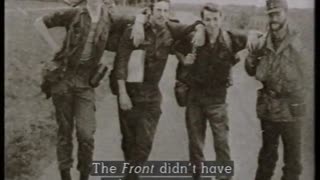 48:39
48:39
The Memory Hole
1 year agoOperation Gladio Part 3: CIA, MI6, Subversive Activities & False Flag Operations
1.66K4 -
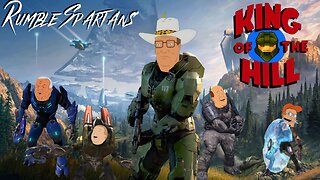 LIVE
LIVE
Amish Zaku
5 hours agoRumble Spartans December Event
36 watching -
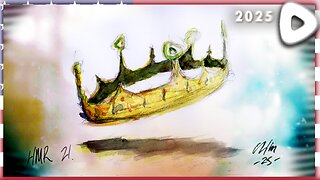 LIVE
LIVE
OhHiMark1776
5 days ago🟢12-06-25 ||||| HMR. 21: King of the Hill ||||| Halo MCC (2019)
31 watching -
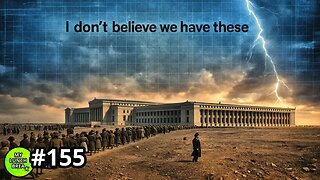 20:08
20:08
MYLUNCHBREAK CHANNEL PAGE
7 hours agoThe Field Museum is From Another Timeline
47.5K10 -
 LIVE
LIVE
BigTallRedneck
16 minutes agoRUMBLE SPARTANS HALO NIGHT
56 watching -
 LIVE
LIVE
AirCondaTv Gaming
58 minutes agoHalo: The Master Chief Collection - Conda a Clause is Spreading some Plasma Holiday Cheer (Collab)
36 watching -
 3:22:01
3:22:01
SpartakusLIVE
4 hours agoSOLOS on ARC Raiders || WZ Stream LATER
117K1 -
 LIVE
LIVE
GritsGG
5 hours agoBO7 Warzone Is Here! Win Streaking! New Leaderboard?
249 watching -
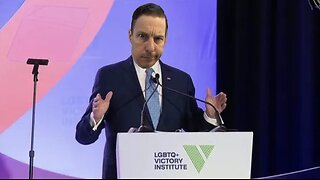 1:00:55
1:00:55
Jeff Ahern
5 hours ago $8.18 earnedThe Saturday show with Jeff Ahern
46.5K16 -
 LIVE
LIVE
Ouhel
7 hours agoSATURDAY | Battlefield 6 | Going for the Queen in Arc after | O'HELL LIVE |
43 watching